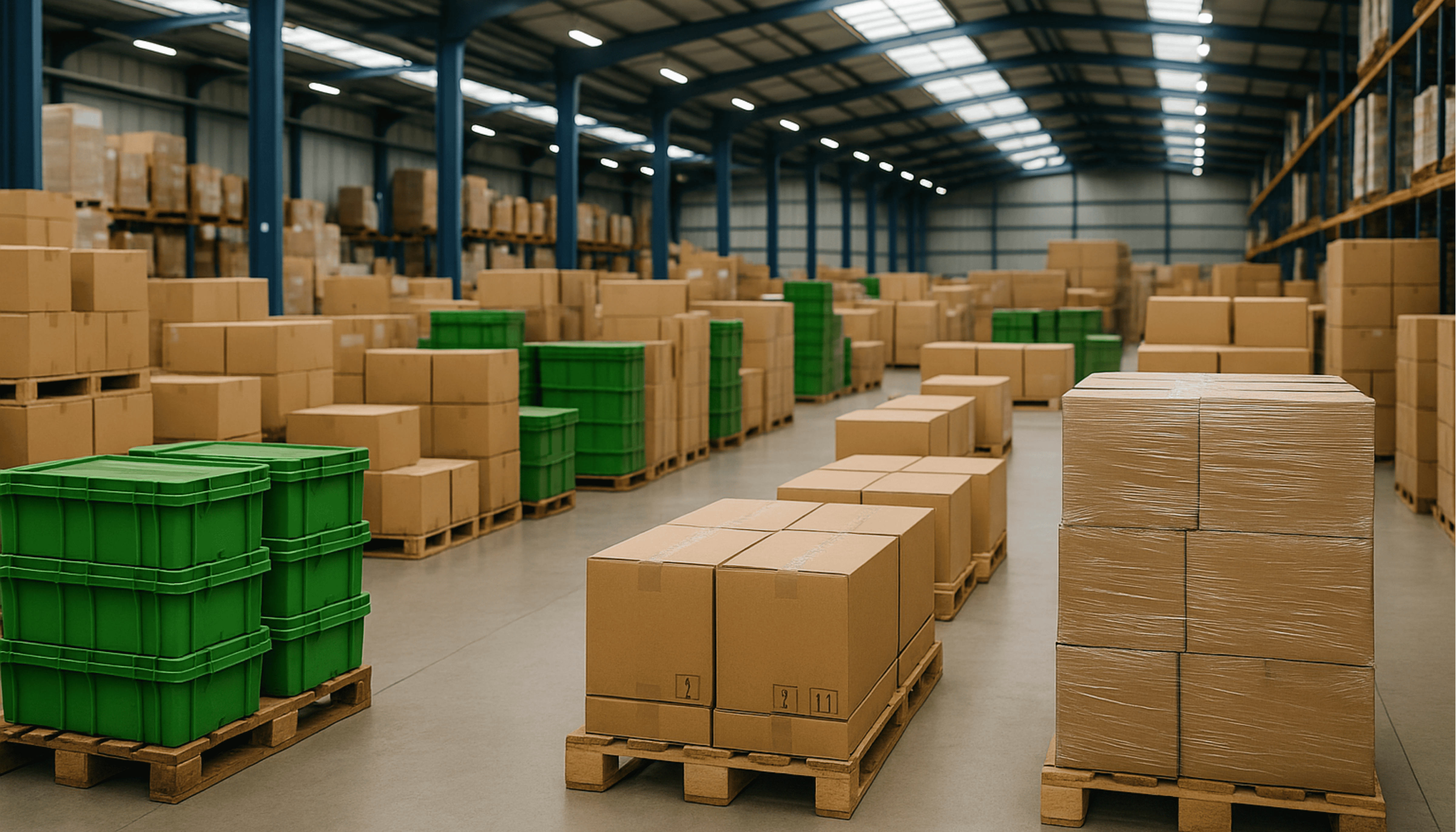Sustainability — How environmentally friendly transport packaging makes the difference
Packaging is the invisible backbone of logistics — it protects, stabilizes and structures flows of goods all over the world. But they are also a significant environmental factor. Millions of tons of plastic, cardboard and composite materials are used every year to safely transport goods. In times of rising raw material prices and growing climate goals, a key question therefore arises: How can logistics package more sustainably without losing efficiency?
The answer lies in new materials, sophisticated reusable systems and an intelligent circular economy. Sustainable packaging is no longer a niche issue, but a central component of modern transport strategies.
Why packaging makes the difference over sustainability
Around 40 percent of all plastics produced in the EU are used for packaging. While many of these materials are discarded after a single use, it is becoming increasingly apparent that sustainable packaging systems They offer several advantages: They not only reduce material consumption, but also improve the CO₂ balance along the entire supply chain.
Sustainability in packaging logistics means not only “less material,” but above all more intelligent use of materials: reusable containers, recyclable plastics, bio-based films and modular systems that can be optimally integrated into automated storage and transport systems.
Innovations in the area of transport packaging
The packaging industry has made tremendous progress in recent years. Some of the key developments:
- Reusable packaging: From foldable mesh boxes to robust plastic containers — reusable solutions are on the rise. They reduce waste, reduce procurement costs and enable standardized processes.
- Recyclable materials: More and more packaging today consists of mono-materials, which can be fully integrated into existing recycling flows.
- Bio-based films: These are made from renewable raw materials such as corn starch or sugar cane and are biodegradable — ideal for industries with high film consumption.
- Lightweight construction and volume reduction: Lower wall thicknesses and optimised shapes make it possible to reduce transport weights and storage costs without impairing the protection of the goods.
- Smart packaging: Sensors and tracking systems provide transparency about the condition, temperature and location of goods — an important step towards smart logistics.
Economy meets ecology
Sustainable packaging is not a cost factor, but a competitive advantage. Companies that use ecological solutions save money in the medium term by using less materials, reduced disposal costs and lower CO₂ taxes.
Acceptance is also increasing among customers, who are increasingly paying attention to sustainable supply chains. According to a survey by the German Chamber of Industry and Commerce (DIHK), over 60 percent of business partners expect transparency about packaging and recycling concepts.
A lot is also happening at the regulatory level: The EU Packaging Regulation (PPWR) Calls for higher recycling rates, clearer labeling requirements and greater focus on reuse from 2030. Companies that adapt early benefit twofold — ecologically and economically.
The role of logistics
Packaging is not an isolated issue in logistics, but part of a holistic process. From warehouse to transhipment to delivery, the right packaging concept determines efficiency and sustainability. Logistics companies can act as pioneers here by:
- Digitize and optimize packaging processes
- rely on standardized reusable systems
- Check supply chains for resource efficiency
- Involve partners and customers in circular strategies
The future lies in cooperation along the entire value chain — from manufacturer to packer to freight forwarder.
Future perspective: Circulatory rather than disposable
The path to sustainable packaging logistics involves closed material cycles. More and more companies are investing in return and cleaning systems that enable the reuse of transport packaging. At the same time, digital platforms are being created that track reusable packaging and document its life cycle — from initial use to reprocessing. In combination with AI-based forecasts of material requirements and return rates, the result is an efficient, data-based packaging cycle — a central component of tomorrow's logistics.
Sustainable transport packaging is much more than an ecological trend — it is a key factor for efficient, sustainable supply chains. By using reusable systems, recyclable materials and digital solutions, logistics can reduce waste, reduce emissions and save costs at the same time. The combination of ecology and economy makes sustainable packaging a central element of modern logistics strategies — and a clear competitive advantage for companies that rethink early on.

